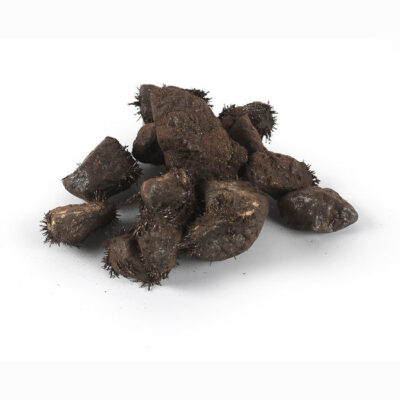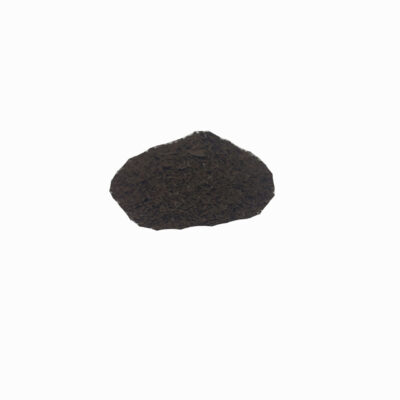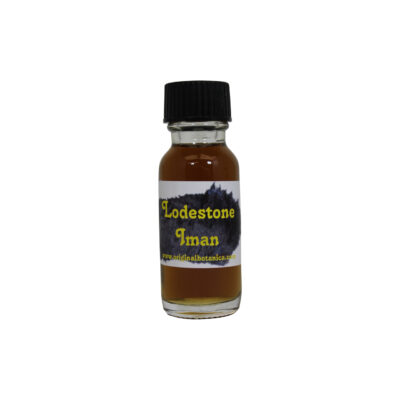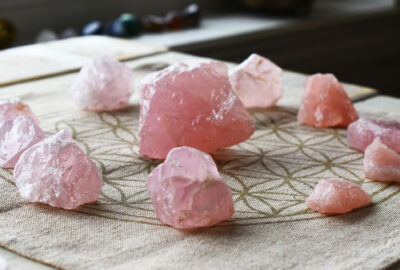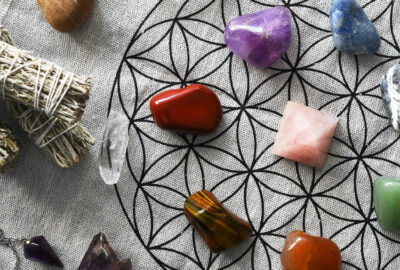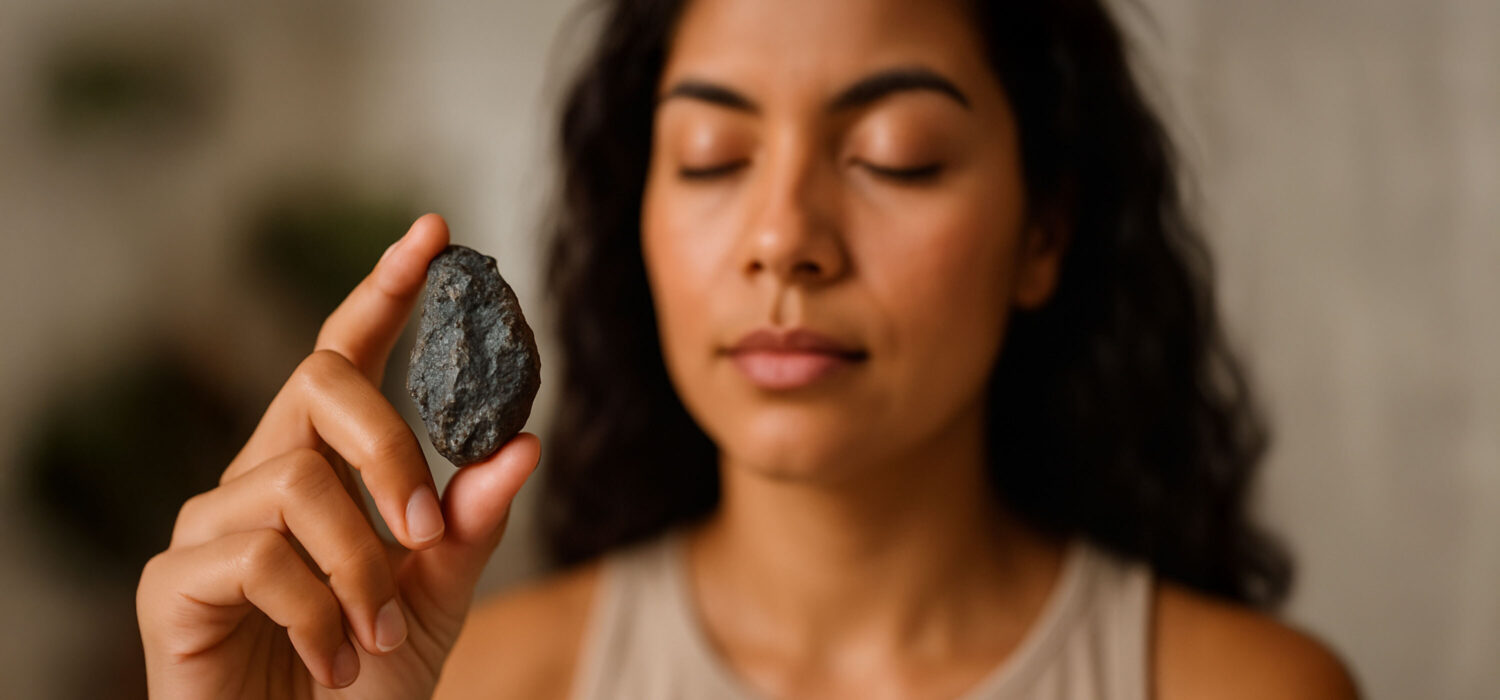
Bring Luck and Prosperity With Magnetic Lodestones
Lodestones have long captured human imagination. These naturally magnetized stones do more than pull iron filings. For thousands of years, people across cultures believed they could also draw love, luck, money, and protection into their lives. Sailors carried them for guidance, lovers exchanged them for fidelity, and practitioners of Hoodoo still honor them as living spiritual allies.
A lodestone is not simply a mineral curiosity. It is a bridge between the scientific and the spiritual. Its physical magnetism mirrors the unseen pull of prosperity and destiny. To hold one is to connect with a tradition that stretches from ancient philosophy to modern spiritual practice.
Lodestone Meaning
The word lodestone comes from Middle English lode stane, which means “leading stone.” This name reflects its historic role in navigation, since early compasses were fashioned with lodestones to guide travelers across land and sea.
Geologically, lodestones are pieces of magnetite, an iron oxide mineral. While magnetite is abundant, only rare pieces become permanently magnetized through natural processes such as lightning strikes or strong geomagnetic fields. Those pieces are called lodestones.
Spiritually, their meaning is rooted in attraction. Just as they physically pull metal toward themselves, they are believed to pull opportunities, wealth, and relationships into the lives of those who care for them. Unlike many crystals that are described as radiating energy outward, lodestones symbolize drawing power inward, making them ideal for manifestation work.
The Long History of Lodestones
Lodestones hold one of the oldest recorded histories of any stone used for both science and spirituality. Their story crosses continents and eras, blending myth, observation, and practical use.
Ancient Greece and Rome
In Greek legend, a shepherd named Magnes noticed that the nails of his sandals and the iron tip of his staff clung to a strange rock on Mount Ida. From this tale, the word magnet is believed to have been born.
Philosophers were equally fascinated. In the 6th century BCE, Thales of Miletus suggested that lodestones were alive because they could move iron. Later, Aristotle described their properties in his writings on natural science. For the Greeks, the lodestone’s pull was a mystery that hinted at hidden life within matter.
The Romans expanded on these ideas. Pliny the Elder, in his Natural History (1st century CE), recorded various beliefs about lodestones, including their use in love charms and healing. Roman soldiers and travelers sometimes carried them for strength and protection.
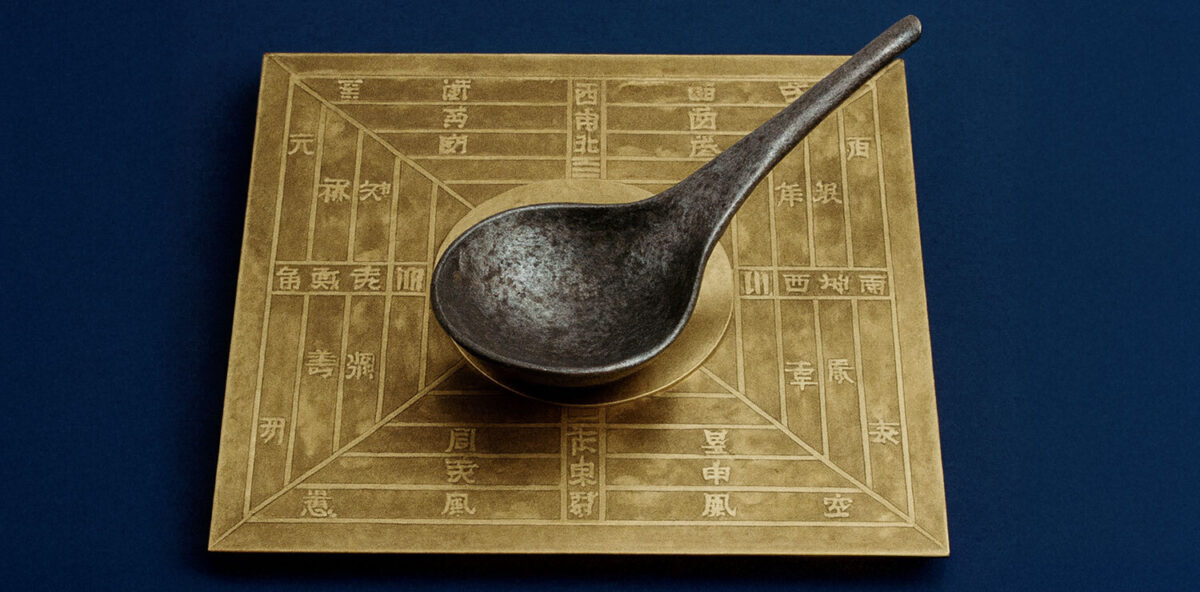
In the Han dynasty, Chinese craftsmen shaped lodestones into spoon-like tools that spun smoothly on bronze plates, consistently aligning toward the south.
China and the Birth of the Compass
In China, lodestones were recognized for their directional properties. As early as the 4th century BCE, texts describe how “the lodestone makes iron come.” During the Han dynasty, artisans carved lodestones into spoon-shaped devices that rotated freely on bronze plates, always pointing south. These “south-pointing spoons” were first used in feng shui, guiding the placement of tombs and buildings to harmonize with the natural world.
By the 11th century, scholars like Shen Kuo recorded how rubbing iron needles with lodestones magnetized them, creating the first true compasses. Initially used for divination, compasses soon became essential for navigation. This innovation spread westward, changing the course of global trade and exploration.
Islamic and Other European Traditions
Medieval Islamic scholars studied magnetism extensively. Writers such as Al-Biruni (11th century) described the behavior of lodestones in scientific terms, laying the groundwork for future understanding.
In Europe, the compass appeared around the 12th century and quickly became indispensable for sailors. Beyond navigation, lodestones entered folk belief. Knights sometimes carried them into battle as charms of courage. Sailors believed they could calm storms. Lovers gave them as tokens of fidelity. In everyday European folk magic, they appeared in charms for luck, healing, and attraction.
The Americas and Indigenous Knowledge
In Mesoamerica, the Olmecs (around 1000 BCE) carved bars of magnetite and possibly used them as directional tools. Whether for ritual or navigation, these artifacts show that magnetic stones held meaning in the Americas as well.
Later, Indigenous traditions in North America also respected magnetic stones as gifts of the Earth, connecting them to guidance, grounding, and sacred power.
Lodestones in Hoodoo and Folk Magic
Although many cultures valued lodestones, their most vibrant living tradition is found in Hoodoo and Conjure, African American folk practices rooted in ancestral wisdom. In these traditions, a lodestone is not just a stone. It is a living spirit.
Living Allies
Practitioners treat lodestones as partners. They may be named, spoken to, and even baptized in the name of the Trinity or other sacred powers. A lodestone is cared for like a spiritual ally rather than a passive tool.
Feeding and Respect
Lodestones are “fed” with magnetic sand, which is fine iron filings that both renew their magnetism and symbolize nourishment. Some are also anointed with condition oils depending on the purpose: Money Drawing Oil for prosperity, Love Oil for relationships, or Protection Oil for safety. Feeding is not a one-time act. It is ongoing care that maintains the stone’s vitality.
Male and Female Stones
Hoodoo often uses paired lodestones to represent relationships. One is designated male, usually more angular, and the other female, usually more rounded. These stones are named for the people involved, kept together, and regularly fed. Their magnetic attraction mirrors the pull of love and connection between partners.
Money and Business
Single lodestones are widely used in Hoodoo for prosperity. They are kept in wallets, money bowls, or cash registers, where they symbolically represent the flow of financial transactions. Business owners sometimes name their lodestones after their shops and feed them as if nourishing the success of the enterprise itself.
For a deeper dive into lodestones used in prosperity work, see our guide on Lodestones for Money, Love, and Success.
Lodestone Properties
The physical and spiritual qualities of lodestones overlap in symbolic ways. Their most widely recognized properties include:
Attraction of prosperity. Placing a lodestone with money or financial papers is believed to attract wealth. Many people keep them in wallets, purses, or cash boxes to encourage steady financial flow.
Love and partnership. Paired stones symbolize unions, helping to attract romance or strengthen bonds. They are often named for couples and kept together to encourage loyalty and lasting affection.
Luck and opportunity. Carrying a lodestone is thought to make the bearer more magnetic to favorable outcomes, from chance meetings to unexpected opportunities.
Guidance. Linked historically to the compass, lodestones symbolize orientation, both literal and spiritual. They remind us to stay aligned with our purpose.
Grounding. Their heaviness and iron content connect them to the Earth, offering stability and focus, especially during times of change.
Many newcomers ask how lodestones differ from other crystals. The difference lies in their pull. While quartz or amethyst are described as radiating energy outward, lodestones are unique for drawing energy inward. They are magnets in both the scientific and spiritual sense.
Lodestone Spiritual Correspondences
In addition to their role in Hoodoo and folk traditions, lodestones also appear in modern crystal-healing systems. These associations connect their magnetism to broader spiritual frameworks:
- Chakras: Lodestones resonate strongly with the Root Chakra, grounding and stabilizing energy, and with the Solar Plexus Chakra, where they support confidence and willpower.
- Zodiac Signs: They are often linked with Aries for drive, Capricorn for persistence, and Leo for recognition.
- Element: Lodestones carry the energy of Earth, with a subtle spark of Fire, reflecting their grounding iron composition and their charged magnetism.
- Numerology: Associated with the number 1 for leadership, attraction, and beginnings.
Including these correspondences helps bridge traditional practices with modern metaphysical systems, allowing more people to connect with the stone through the language of energy work.
Feeding and Charging Lodestones
Because they are treated as living allies, lodestones require ongoing care.
Feeding. Sprinkle Magnetic Sand onto the stone to keep its magnetism strong. Anoint with oils aligned to your intention, such as prosperity, love, or protection oils. Approach feeding as an offering, a gesture of respect and reciprocity.
Charging. Expose the stone to sunlight or moonlight for renewal. Speak your desires directly to it, treating it as a companion that understands your goals. Place it near items linked to your purpose, such as money for prosperity or keepsakes for relationships.
This cycle of feeding and charging sustains the bond. Over time, many practitioners report that their lodestones feel more responsive, as though alive to the relationship.
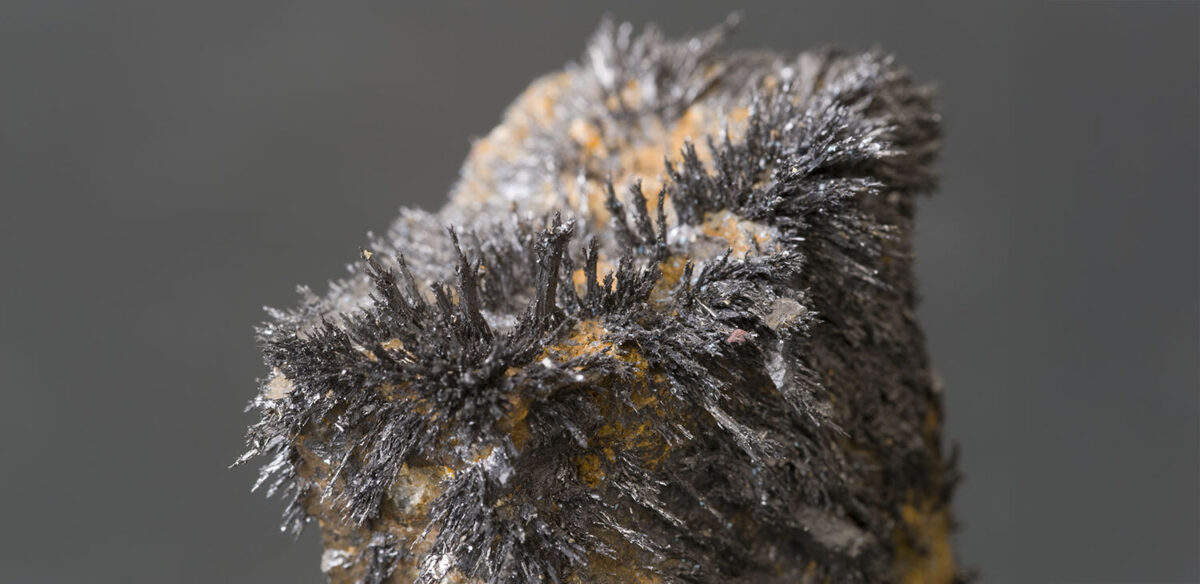
Feeding your lodestone with magnetic sand keeps its natural power strong, so it continues to draw luck, love, and prosperity.
A Simple Lodestone Meditation
Even outside of rituals, lodestones can help you align your energy. Sit quietly with a lodestone in your hand. Breathe deeply and imagine the stone pulling your intentions closer, like iron drawn to a magnet. Whisper your desire into the stone, then place it somewhere meaningful. This small act creates a connection between your vision and the lodestone’s magnetic pull.
Everyday Uses of Lodestones
Lodestones can be powerful without formal rituals. Simple practices help integrate their magnetism into daily life:
- Carry a small lodestone in your pocket or bag to attract luck and opportunity.
- Keep one in your wallet or cash box to encourage financial flow.
- Place a pair of lodestones on your altar to strengthen or attract love.
- Keep one near important documents or workspaces to draw opportunities closer.
Treat your lodestone with care. Do not drop or strike it, as physical damage can weaken its magnetism.
Even in these everyday settings, the presence of a lodestone is a constant reminder of attraction. It helps focus your intentions and align your energy with what you want to draw in.
FAQs About Lodestones
How do you feed a lodestone with magnetic sand?
Simply sprinkle a pinch of magnetic sand onto the stone while speaking your intention. This both renews its natural pull and symbolizes nourishment.
Can lodestones lose their magnetism?
Yes, if physically damaged or neglected. Regular feeding and respectful care help maintain their vitality.
What’s the difference between a lodestone and regular magnetite?
Magnetite is common, but only certain pieces naturally magnetize through Earth processes. Those rare magnetized pieces are lodestones.
Are lodestones safe to carry every day?
Yes, as long as they are handled gently and not dropped. Many people carry small ones in pockets, purses, or wallets.
Can you combine lodestones with other crystals?
Absolutely. Lodestones pair well with crystals like citrine for prosperity, rose quartz for love, or clear quartz for amplifying intention.
Invite Prosperity Into Your Life With Lodestones
Lodestones are among the few spiritual tools that unite science and symbolism so completely. They have guided sailors, inspired philosophers, and become cherished companions in folk traditions.
Their magnetism demonstrates an unseen force of nature. Their symbolism teaches that attraction is also a spiritual law. What you honor and nurture will draw closer.
By feeding, charging, and respecting a lodestone, you step into a practice that stretches back millennia. From ancient compasses to Hoodoo altars, lodestones continue to prove that unseen forces are both real and accessible. They remind us that the power of attraction is not only within the stone but also within ourselves.
